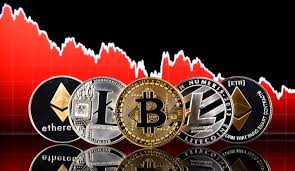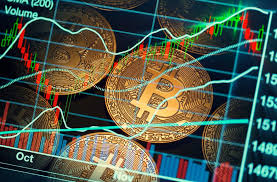
Understanding the Dynamics of Crypto Trading High-Frequency
High-frequency trading (HFT) has revolutionized the landscape of financial markets, including the burgeoning field of cryptocurrency trading. By utilizing sophisticated algorithms and high-speed data networks, traders are able to execute millions of orders in a blink of an eye. In this article, we will delve into the workings of crypto trading high-frequency, examining its mechanics, advantages, and potential pitfalls. For an in-depth visual explanation of this fascinating subject, check out this Crypto Trading High-Frequency https://www.brighteon.com/3a433bcc-b17d-4afc-a531-784e06a6bfb1.
What is High-Frequency Trading?
High-frequency trading is a form of algorithmic trading characterized by the extremely high speed at which trades are executed. Traders use complex algorithms to analyze multiple market conditions and make rapid trades based on very small price movements. In traditional trading, a trader might buy and hold an asset for days, weeks, or months. However, high-frequency traders hold positions for mere seconds or milliseconds, taking advantage of fleeting opportunities.
The Rise of HFT in the Crypto Market
The expansion of cryptocurrency trading platforms has created fertile ground for high-frequency trading strategies. With the inherent volatility of cryptocurrencies, HFT allows traders to capitalize on small price fluctuations that happen frequently. This market offers unique opportunities for arbitrage and statistical arbitrage, where HFT algorithms can identify price discrepancies across multiple exchanges and execute trades to profit from these differences.
Mechanics of Crypto HFT
The success of HFT in crypto trading depends on several key components:
- Technology: Fast computers, low latency data feeds, and optimized algorithms are essential to execute trades effectively.
- Market Data: High-frequency traders rely on accurate, real-time data to inform their trading decisions.
- Infrastructure: Proximity to exchange servers, often referred to as “co-location,” can provide significant advantages in execution speed.

Benefits of High-Frequency Trading
The benefits of crypto trading high-frequency are profound, including:
- Liquidity: HFT increases liquidity in the market, making it easier for other traders to buy and sell assets without affecting prices significantly.
- Market Efficiency: By exploiting price discrepancies, HFT can help correct mispricing and lead to more efficient markets.
- Potential Profits: The ability to execute trades at lightning speed allows high-frequency traders to capitalize on minuscule price movements that slower traders might miss.
Challenges in High-Frequency Crypto Trading
Despite its attractions, crypto trading high-frequency also comes with challenges:
- Risk of Loss: The fast-paced nature of HFT means that losses can accumulate just as quickly as profits, leading to potentially severe financial repercussions.
- Market Manipulation Concerns: Some critics argue that HFT can lead to market manipulation, as it may cause unnecessary volatility and price fluctuations.
- Regulatory Scrutiny: Governments and regulatory bodies are increasingly examining HFT practices in light of their impact on market stability.
The Future of High-Frequency Trading in Crypto
As the cryptocurrency market continues to mature, the role of high-frequency trading will likely evolve. With advancements in technology, such as artificial intelligence and machine learning, traders will have even more sophisticated tools at their disposal. New regulations may also shape the future landscape, providing a framework to balance the benefits of HFT with the necessary safeguards against misconduct.
Conclusion
Crypto trading high-frequency exemplifies the intersection of technology and finance, showcasing both the opportunities and challenges that come with rapid trading. For traders willing to navigate its complexities, HFT offers a unique avenue to profit in a volatile market. While the potential rewards are significant, it is crucial to approach high-frequency trading in cryptocurrencies with caution, due diligence, and a robust risk management strategy.
